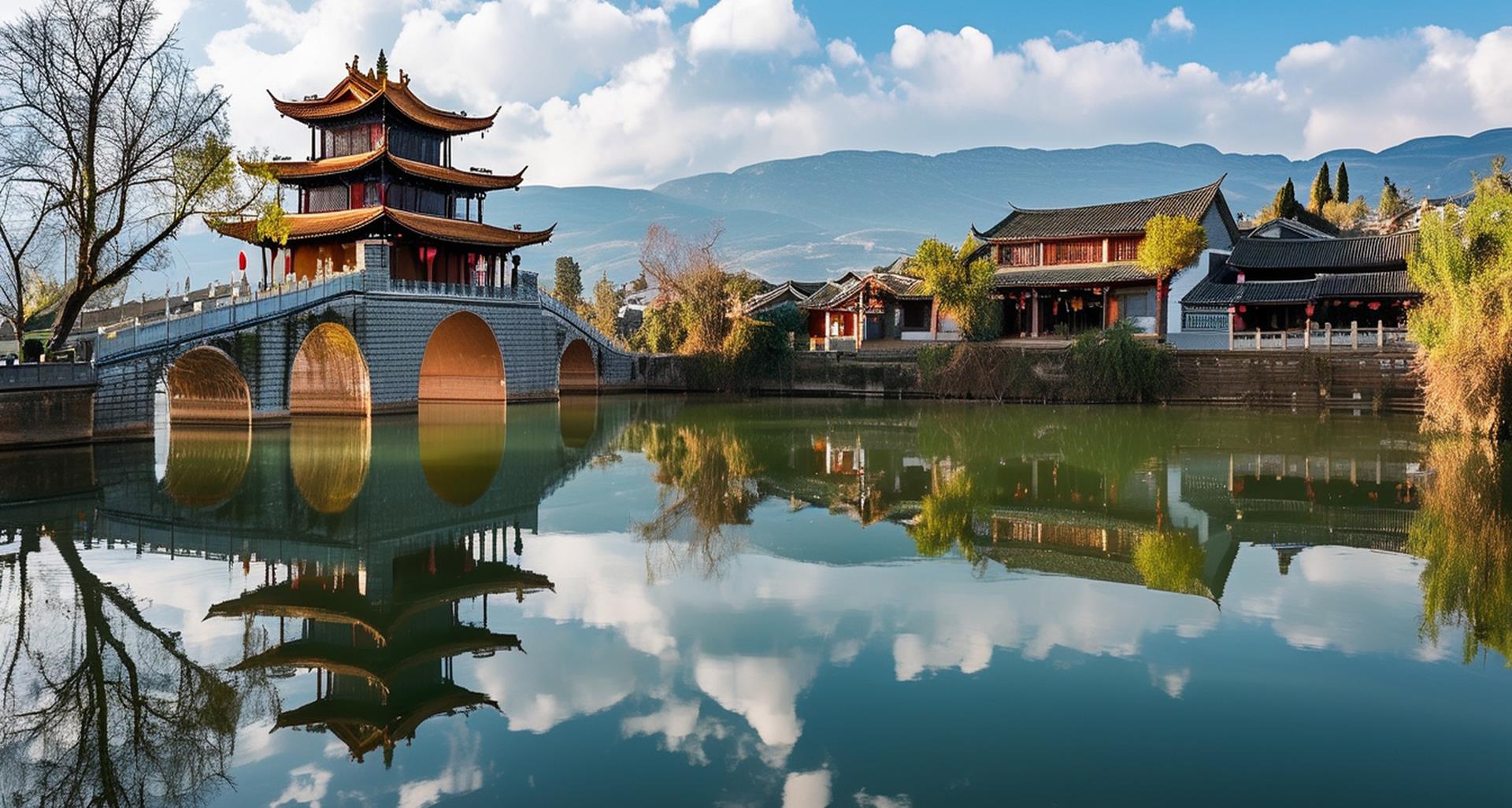A city located on the Yunnan-Guizhou Plateau, southwest of Gaoligong Mountain, with an area of less than 1000 square kilometers,Ruili is often an overlooked border town.

Wanting Bridge
A bridge, a river, south of the clouds, on the red earth, a touch of sadness and heroism... Wanting, in the Dai language, means "the place where the sun is directly overhead." Also known as Menghui, Wanting means "big mountain valley village."
With a population of over 20,000, the urban area is home to just over 5,000 people, making it one of the smallest cities in China. It is a national-level port, and one of the three open border cities in Yunnan.
The Wanting Bridge is located on one side of the Wanting city and is a border bridge on the river between China and Myanmar. It is an important channel for the people of China and Myanmar to trade, interact culturally, and exchange commerce.
It serves as the gateway to the southwest of the motherland. The Wanting Bridge is the endpoint of the China section of the Dian-Burma Road, the endpoint of National Highway 320, the key to the Dian-Burma Road, and the link between China and India. It stretches north to Kunming and Shanghai, south to Lashio in Myanmar and Yangon, and can reach India to the northwest. It has gained fame at home and abroad for its significant role in China's anti-Japanese and diplomatic history.
Whether walking on the Wanting Bridge or stopping to read the history written beside the bridge monument, when in Ruili, visitors should come and see the Wanting Bridge. Do not forget history, strive for the present, and look forward to the future.
Solitary Trees Forming a Forest
Who says it’s hard to form a forest from a solitary tree? The banyan tree is an exception, and in Ruili, the banyan tree presents a unique landscape. In Dehong, the banyan tree accounts for the largest proportion among all tree species, planted on hills, in villages, and along roads, either standing alone or connected in patches.
One Village, Two Countries
One Village, Two Countries, is located in the southwest of Ruili City, marked by the famous Sino-Burmese Border Pillar No. 71. The national border passes through the centre of the village, dividing a Dai ethnic village into two parts. The Chinese side is called Yinjing, while the Burmese side is known as Mangxiu. The scenic area features attractions like a well and swing shared by the two countries.
Wanting Ecological Park
The park boasts over 40 species of tropical and subtropical rare plants and more than 100 varieties of exotic birds and animals. Friends who appreciate natural biodiversity should not miss this opportunity.
Ruili River
Known as Nammao River in Dai language, flowing through Mengmao and also called Mengmao River, the Ruili River is a significant river in the western part of Yunnan Province, belonging to the Irrawaddy River system.
Moli Waterfall
The Moli Tropical Rainforest Scenic Area is a national 4A-level scenic spot with over 1,540 plant species, 479 varieties of flowers and spices, and numerous tropical and subtropical plants. Traversing through the dense rainforest, visitors reach the end of the gorge to witness the magnificent Moli Waterfall cascading down from a 60-meter-high cliff.
Jiele Golden Pagoda
Jiele Golden Pagoda is one of the famous pagodas in Southeast Asia. In the Dai language, it is called "Guangmu Hema," meaning the pagoda at the head of the horse in the dam. Located five kilometres northeast of Ruili City, it is the oldest Buddhist structure in Ruili, serving as a venue for Buddhist activities and a tourist attraction.

Must Taste dishes
- Sa Pie
“Haven't tried 'Sa Pie'? You haven't truly experienced Dai flavour!” Sa Pie, pronounced in Dai language, translates to "cold-mixed meat." A traditional and popular dish in Dai cuisine, often served to guests, it is cherished by locals. - Guoshou Rice Noodles(Crossing Hand Rice Noodle)
Exclusive to the Achang ethnic group in Dehong Prefecture, "Crossing Hand Rice Noodles" involves placing a handful of rice noodles in the palm and adding toppings for a unique eating experience. - The Blida
Influenced by the connection with Myanmar, Ruili embraces the Burmese dessert, Blida. Comprising of butter biscuits, sweet coconut milk, sticky purple rice, coconut shreds, sago, and condensed milk, it offers a delightful blend of sweetness and rich coconut flavour with a hint of Dai spice. - Chong Chicken Feet A distinctive dish of Ruili, Chong Chicken Feet involves deboning cooked chicken feet, adding ingredients like lemon, cilantro, small hot peppers, lettuce roots, and peanuts. The mixture is then pounded in a bamboo tube, creating a tasty and refreshing dish.
Ruili Travel Tips:
Sunscreen Reminder: Due to Ruili's location on the Yungui Plateau, strong ultraviolet rays are prevalent. Make sure to apply sunscreen when going outdoors.
Carry Identification: Considering the border region, carry your identification during travel to avoid inconvenience during random checks.
Night Safety: For women going out at night, travel in groups and avoid solo night market visits to ensure safety.
Cultural Respect: When encountering Burmese monks, avoid touching their heads as it is considered impolite.
Best Travel Time: Ruili has a typical subtropical rainforest climate, suitable for year-round travel. Winter (November-March) is warm, requiring no heavy clothing; summer (June-September) is humid, so beware of heatstroke.






